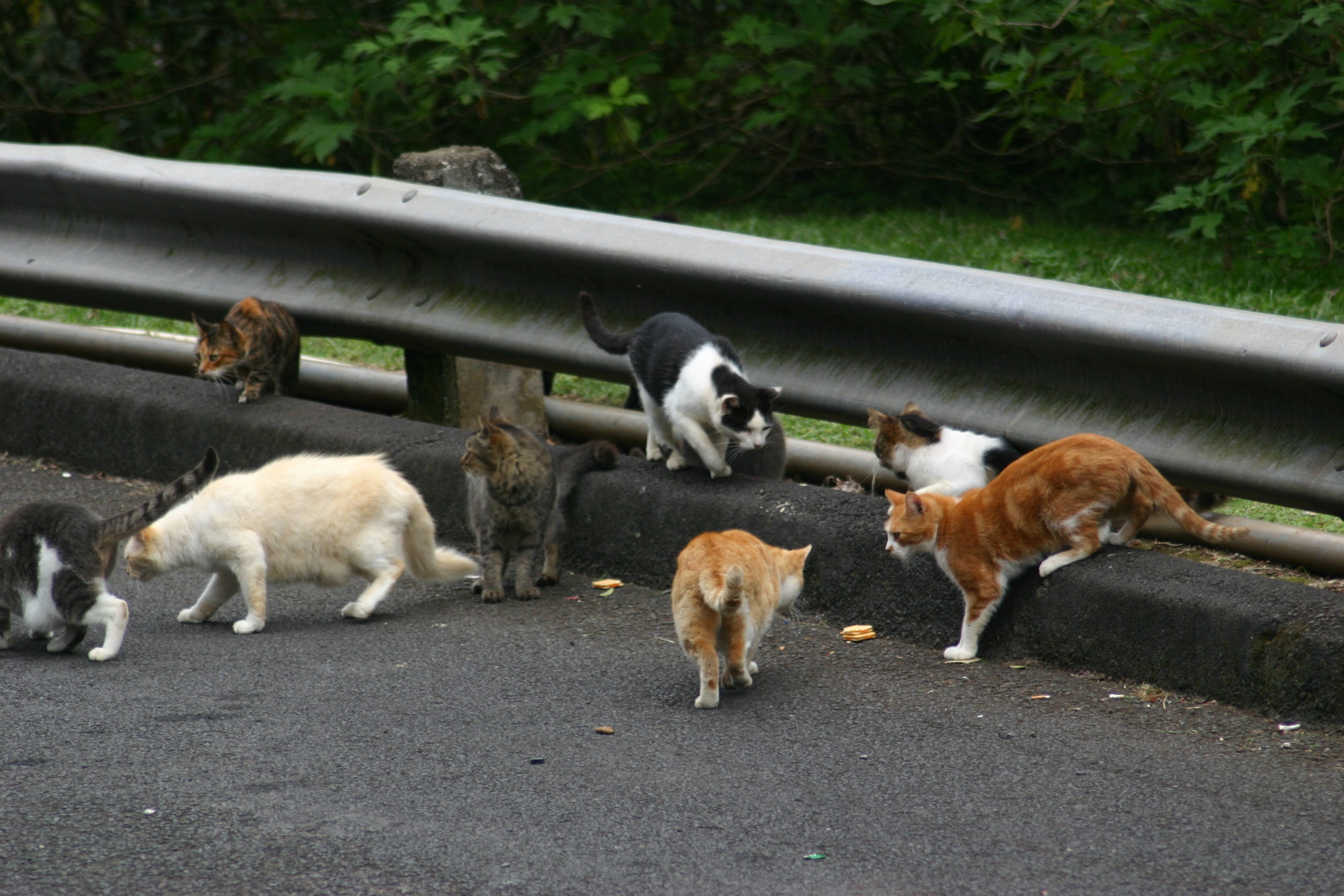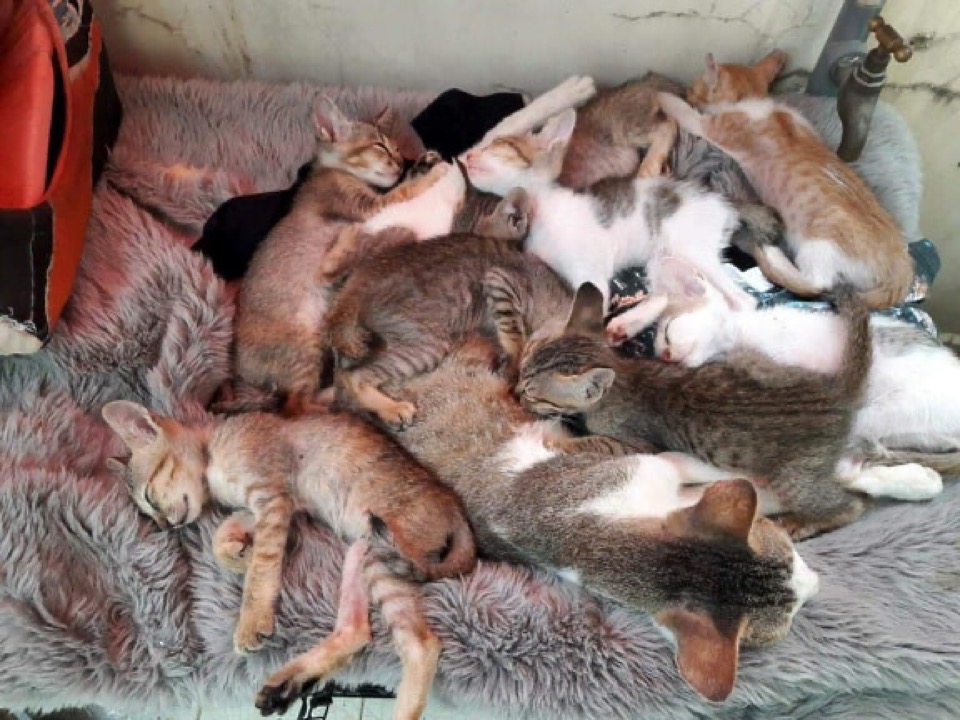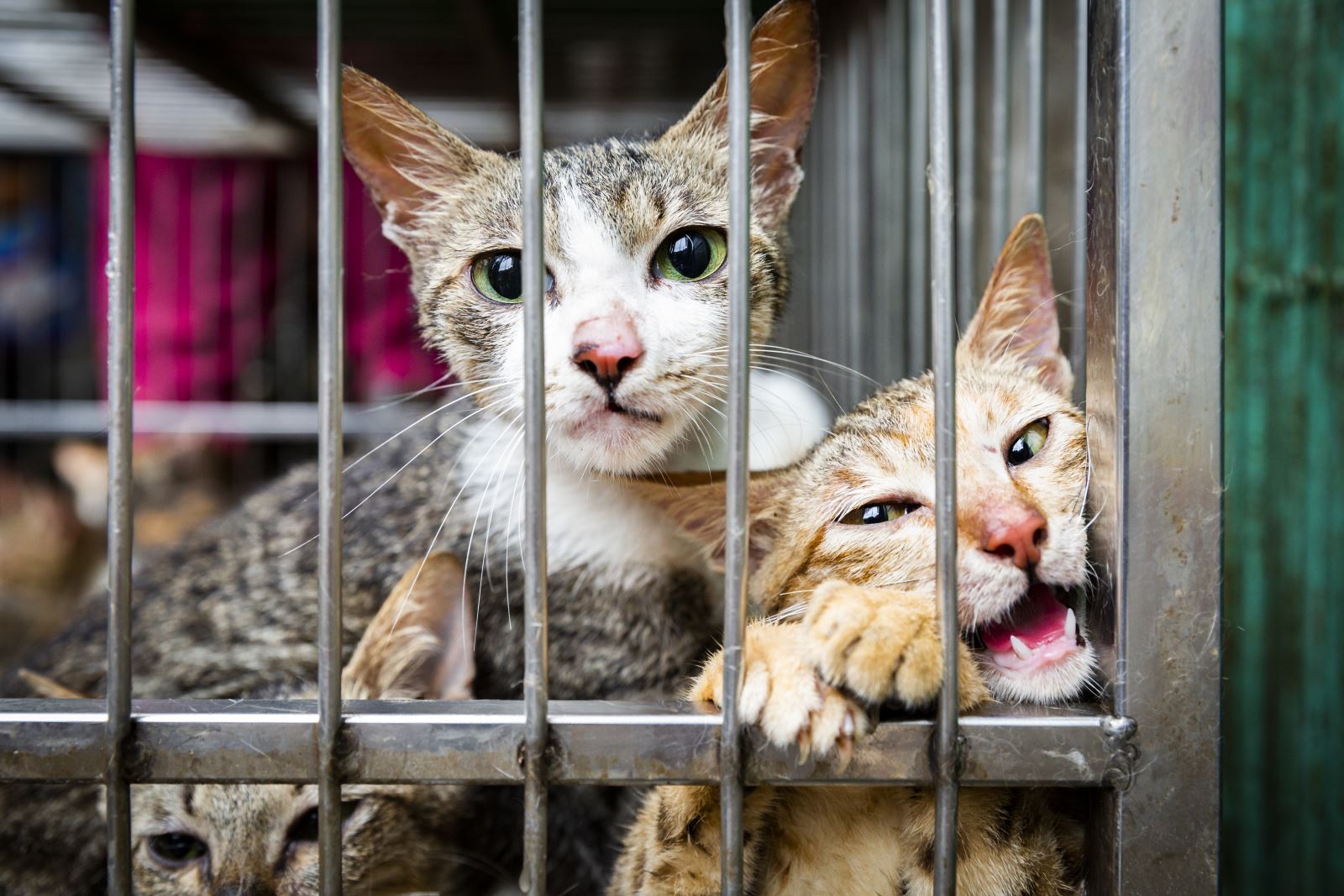Welcome to dreamartcanada latest blog post! The purrs of contentment, the playful swats of a fluffy tail, the endearingly quirky personalities – cats have long captivated human hearts. But beyond the undeniable charm, why fostering cats from rescue shelters is gaining popularity across the US has emerged as a powerful trend in recent years. It’s a movement driven by a complex interplay of factors, including growing awareness of animal welfare, a shift in societal values, and a recognition of the profound benefits fostering offers both to cats and the individuals who open their homes. This article delves into the various reasons behind the surge in cat fostering, exploring the motivations of individuals, the impact on shelters and rescue organizations, and the broader social consequences of this heartwarming trend.

The Rise of Compassionate Communities: Recognizing the Plight of Shelter Cats
As the collective consciousness regarding animal welfare evolves, it becomes evident that fostering filled a significant gap in addressing the issue of shelter overcrowding. Individuals increasingly recognize that animal shelters and rescue organizations are often overwhelmed with the sheer number of animals needing care. The escalating plight of shelter cats is not just an isolated concern; it represents a systemic challenge that calls for immediate action.
Growing Awareness and the Role of Social Media
The advent of social media platforms has catalyzed the movement towards fostering by amplifying the voices advocating for animal welfare. Through online campaigns, educational posts, and engaging videos showcasing adorable cats looking for homes, the awareness surrounding the realities of life in shelters has reached new heights. People now witness first-hand accounts of stories shared by fosters and rescue organizations, prompting empathy and action among viewers. This digital visibility makes it easier for individuals to connect emotionally with the cause, motivating them to support through fostering.
Moreover, viral campaigns featuring beloved cats and their journeys from neglect to recovery have changed perceptions about pet ownership. Such narratives become pivotal as they evoke emotional responses that ignite a desire to help. With just a click or a tap, individuals can learn how simple acts of kindness can transform lives—both for the cats and for themselves.
Ethical Implications in Pet Ownership
As people become more conscious of animal welfare, there’s been an ethical awakening regarding responsible pet ownership. Many individuals reflect on the implications of breeding practices and the consequences of pet abandonment. Fostering presents a proactive approach to combat these issues. By stepping in to care for shelter cats, fosters not only provide vital support but also actively participate in a solution-oriented framework that emphasizes compassion over consumerism in pet ownership.
In essence, fostering becomes a form of advocacy, turning compassion into action. This cultural shift towards ethical engagement creates a ripple effect throughout communities, where individuals inspire one another to prioritize animal welfare over convenience.
Community Engagement and Support for Local Shelters
Fostering isn’t merely a personal endeavor; it intertwines with community engagement. Local shelters promote fostering programs, hosting events that encourage residents to get involved. These initiatives build collaborative networks of compassionate citizens committed to rescuing animals. When community members come together to foster cats, they establish supportive environments that amplify efforts toward finding suitable homes for pets in need.
Furthermore, the sense of belonging that comes from working as a team reinforces the motivation to foster. As individuals engage with others who share their passion for animal welfare, they cultivate friendships and bonds that extend beyond fostering itself. This sense of camaraderie fosters a culture of support that becomes essential in tackling the challenges faced by rescue organizations.
Fostering as a Stepping Stone to Adoption: Offering a Temporary Home with a Lasting Impact
At the core of fostering is the critical role it plays in facilitating successful adoptions. The impacts of providing a nurturing environment extend far beyond the short timeframe of fostering; each foster home serves as a transformative space for cats preparing for their forever families.
Creating Comfortable and Nurturing Environments
Shelter environments, while crucial for basic care, often lack the warmth and comfort of a home. For many cats, the stressful atmosphere of a shelter can inhibit their ability to thrive. This is where fostering shines—by offering a temporary, loving home, foster parents help cats acclimate to human companionship in a way that shelters simply cannot replicate.
Cats in foster care experience the joys of being part of a family. They receive individualized attention, playtime, and affection, which are fundamental in helping them develop social skills. The nurturing presence of a foster parent allows cats to explore their personalities freely. Whether it’s a shy feline learning to trust humans or a rambunctious kitten discovering the joy of chasing toys, the environment created by foster care encourages growth and development.
Essential Socialization and Skill Development
Socialization is a key aspect of feline development that fosters can uniquely facilitate. In a loving home setting, cats learn to navigate daily routines and gain essential life skills such as using litter boxes, scratching posts, and interacting positively with humans and other pets. This process not only prepares them for adoption but also enriches their overall quality of life.
Furthermore, fostering empowers prospective adopters to observe cats in a relaxed environment. By seeing how a cat behaves in a home setting, potential adopters can make more informed decisions. They can assess compatibility, observe unique personality traits, and envision how the cat might fit into their own lives. This intimate glimpse into a cat’s behavior fosters successful adoptions, reducing the likelihood of returns to shelters due to mismatched expectations.
Building Bridges Between Cats and Their Future Families
Fostering also acts as a bridge between cats and their future families. Foster parents often share insights with adoption coordinators, describing their experiences with the cat’s behavior, preferences, and quirks. These personalized accounts allow shelters to match cats with families more effectively, ensuring a smoother transition into forever homes.
Moreover, the connections foster parents create with potential adopters can be instrumental in highlighting the unique stories of each cat. These narratives resonate emotionally, inspiring compassionate individuals to consider adopting rather than merely choosing a pet based on appearance. Through storytelling, fostering elevates the conversation around adoption, emphasizing the importance of finding the right match rather than merely filling a void.
A Gateway to Understanding the Realities of Pet Ownership
Fostering cats from rescue shelters does not just benefit the animals; it serves as an invaluable educational tool for individuals curious about pet ownership. Many people may romanticize the idea of having a furry companion without fully grasping the responsibilities that come with it. Stepping into the role of a foster parent provides crucial insights into the complexities of cat care.
Hands-On Experience with Cat Care
When individuals take on the responsibility of fostering, they immerse themselves in the day-to-day intricacies of cat care. From feeding schedules to grooming routines, foster parents learn what it takes to maintain a healthy environment for their feline companions. This hands-on experience goes beyond theory, grounding individuals in real-life scenarios that highlight the importance of commitment and consistency.
Foster parents encounter various behavioural challenges, such as litter box training or introducing the cat to other pets. Solutions to these challenges require patience and understanding, teaching fosters valuable lessons about the needs of animals. This practical experience enables them to approach future pet ownership with knowledge, empathy, and confidence.
Debunking Misconceptions About Cat Behaviour
Another critical aspect of fostering is the education it provides regarding common misconceptions about cats. Many people harbor preconceived notions about feline behaviour that can lead to misunderstandings. Through fostering, individuals gain first-hand knowledge of the unique personalities and needs of each cat.
For example, some may believe that all cats are aloof and independent, yet foster parents often discover affectionate cats that crave companionship. Learning to interpret feline communication, such as body language and vocalizations, allows foster parents to understand their charges better. The nuances of a cat’s behaviour become apparent, fostering respect for their individuality and encouraging future adopters to embrace the diversity of feline traits.
Informed Decision-Making for Responsible Pet Ownership
Ultimately, fostering equips individuals with the insights needed to make informed decisions about pet ownership. The experience helps clarify the responsibilities associated with caring for a cat long-term. Foster parents emerge from their experiences as advocates for responsible ownership, sharing their knowledge within their communities and encouraging others to adopt with understanding.
By becoming more knowledgeable about the complexities of feline care, individuals are better equipped to navigate the challenges that come with pet ownership. They are less likely to succumb to the allure of impulse purchases at pet stores and more inclined to seek out reputable rescues or shelters when considering adoption. This shift in mindset contributes positively to the broader landscape of pet ownership, encouraging lifelong commitments to animal welfare.
The Emotional and Personal Rewards of Fostering
While the impact of fostering extends to the cats and shelters, the emotional rewards for individuals who choose to foster cannot be overlooked. The bond formed between a foster parent and the cat in their care is an experience filled with profound meaning and connection.
Forming Unique Bonds with Cats
The unique bond foster parents form with their cats can evoke feelings of love, joy, and fulfillment. Witnessing a formerly scared or neglected cat blossom under their care is an incredibly moving experience. As fosters nurture these vulnerable souls, they often find themselves deeply touched by the transformation that occurs.
Each moment spent cuddling, playing, or simply observing the quirks of a cat fosters a relationship built on trust and love. These connections remind individuals of the power of compassion and the capacity for change that exists within every living being. It’s this profound realization that spurs many fosters to continue their journey, motivated by the promise of making a difference.
Cultivating a Sense of Community
Fostering also creates a strong sense of community among individuals who share a passion for animal welfare. Participants in fostering initiatives often connect with like-minded individuals—fellow fosters, shelter staff, and volunteers—who understand the challenges and rewards associated with fostering.
This network of support becomes invaluable as foster parents exchange experiences, advice, and encouragement. Whether sharing success stories or seeking guidance during difficult moments, the relationships developed through fostering foster a sense of belonging. Participants find themselves surrounded by a community that celebrates their dedication to animal welfare, reinforcing their motivation to continue fostering.
The Ripple Effect of Compassion
Embracing fostering extends beyond the individual experience; it has a ripple effect that influences entire communities. As fosters share their stories and raise awareness about the importance of fostering cats, they inspire others to get involved. This spirit of compassion transcends boundaries, encouraging individuals to consider how they can contribute to their local shelters.
Every foster cat adopted from a shelter represents a triumph—a testament to the power of love and commitment. The impact spreads further as those who adopt fostered cats often become advocates for animal welfare themselves, continuing the cycle of compassion and care.
Overcoming Challenges and Fostering a Culture of Support
While the rewards of fostering are substantial, it’s essential to acknowledge that fostering comes with its set of challenges. Time commitments, financial responsibilities, and the potential for emotional attachment present legitimate concerns for individuals considering fostering.
Navigating the Time Commitment
Fostering requires a significant time investment. Daily tasks range from providing care—feeding, grooming, and cleaning—to engaging in socialization and training. Additionally, foster parents must manage veterinary appointments and communicate regularly with adoption coordinators.
The demanding nature of fostering necessitates strong organizational skills, flexibility, and a willingness to adapt to the individual needs of each cat. Potential fosters should consider their current lifestyle and determine if they can dedicate the necessary time. Transparency about expected time commitments is crucial in fostering sustainability within rescue organizations.
Addressing Financial Responsibilities
In addition to time, financial responsibilities often accompany fostering. While many rescue organizations cover basic expenses, foster parents may incur costs related to food, litter, toys, and veterinary care. Understanding the financial implications is vital for individuals contemplating fostering.
Rescue organizations must prioritize transparency regarding associated costs and provide financial support to ensure fosters feel supported in their endeavors. Initiatives that help alleviate financial burdens—such as sponsorship programs or partnerships with local businesses—can bolster foster commitment. When potential fosters are aware of available resources, they are more likely to embark on their fostering journey without feeling overwhelmed by financial strain.
Managing Emotional Attachment
One of the most challenging aspects of fostering is the emotional attachment that often develops between a foster parent and the cat in their care. It can be difficult when the time comes for the cat to move on to their forever home, leading to feelings of sadness and loss.
Support systems must be in place to assist foster parents in navigating these emotions. Encouraging open discussions about the struggles associated with parting from a beloved cat can help mitigate feelings of isolation. Networking groups and community events provide safe spaces for fosters to share experiences and draw strength from one another.
Raising Awareness and Cultivating a Support System
To ensure the continued growth and success of the cat fostering movement, fostering a culture of support and awareness is critical. Various strategies can be implemented to educate the public about the benefits of fostering and to create stronger networks for foster families.
Education and Outreach Initiatives
Rescue organizations and animal welfare groups play a pivotal role in educating the public about the realities of fostering. Awareness campaigns that highlight the positive outcomes of fostering can dispel myths and misconceptions.
Workshops and informational sessions can provide potential foster parents with essential guidelines and training, equipping them with the tools needed for success. By demystifying the process of fostering, individuals may feel more confident and willing to embrace the opportunity to make a difference.
Collaborating with Community Partners
Collaboration between rescue organizations, veterinarians, pet supply stores, and community members can enhance fostering initiatives significantly. Such partnerships facilitate resource sharing, organize educational events, and strengthen local support systems.
Community collaboration allows for innovative solutions to the challenges associated with fostering. For example, joint fundraising efforts could generate funds to cover foster-related costs, ensuring that individuals feel financially secure in their endeavors. The combined efforts of various stakeholders create a robust ecosystem that benefits both fosters and the cats they care for.
Establishing Support Networks for Foster Parents
Creating online and offline spaces for foster parents to connect, share experiences, and seek support can significantly enhance their fostering journey. Social media groups, meet-ups, and forums allow fosters to engage with one another, forging relationships that transcend geographical boundaries.
These networks foster a sense of belonging, enabling foster parents to learn from one another and share best practices. When emotional challenges arise, having a reliable support system can be the difference between continuing to foster or stepping back. By establishing open lines of communication, organizations can create resilient communities dedicated to the well-being of animals.
The rising popularity of cat fostering across the United States reflects a growing desire to contribute positively to the well-being of animals in need. It’s a movement fueled by a wave of compassion, a desire to make a tangible difference, and a recognition of the immense rewards that fostering offers both to individuals and to the cats who find solace and a chance at a better life through their kindness.
As fostering gains momentum, its ripple effect extends beyond individual acts of care. It strengthens rescue organizations, facilitates more successful adoptions, and fosters a culture of responsibility and empathy toward animals. The future of animal welfare and rescue efforts hinges on fostering a broader understanding of the challenges faced by shelter animals and encouraging individuals to explore the transformative power of fostering.
>>> Read more: Why are lions chosen as pets by many countries
Ultimately, it’s a symphony of compassion, care, and community orchestrated by the countless hearts that open their homes to provide a brighter future for cats in need.





Related post
Breaking Down the Key Tactical Edgeas in the Oakland Raiders Lineup
Breaking Down the Key Tactical Edges in the Oakland Raiders’ Lineup reveals not just a football team but a storied franchise with an indomitable spirit.
The Most Heartwarming Moments of Spider Man On Screen
The world of Spider-Man is not just filled with thrilling battles and breathtaking stunts; it’s a tapestry woven with moments of profound empathy, love, and
5 Tips to Style Hoodies on Cold Winter Days
As winter settles in, many of us find ourselves reaching for cozy essentials that provide warmth and comfort. One such wardrobe staple is the hoodie.
The Truth Behind the Rumor ‘Santa Claus Is Ugly’ That Surprises Many
As the holiday season approaches, the character of Santa Claus emerges in various forms, his iconic red suit and white beard eliciting warmth and joy
Guide to Creating a Heavy Metal Sound in the Style of Tony Iommi
Heavy metal is a genre rich with history and technical prowess, and few guitarists have influenced its sound as profoundly as Tony Iommi, the legendary
Breaking Down the Key Tactical Edgeas in the Oakland Raiders Lineup
Breaking Down the Key Tactical Edges in the Oakland Raiders’ Lineup reveals not just a football team but a storied franchise with an indomitable spirit.
The Most Heartwarming Moments of Spider Man On Screen
The world of Spider-Man is not just filled with thrilling battles and breathtaking stunts; it’s a tapestry woven with moments of profound empathy, love, and
5 Tips to Style Hoodies on Cold Winter Days
As winter settles in, many of us find ourselves reaching for cozy essentials that provide warmth and comfort. One such wardrobe staple is the hoodie.
The Truth Behind the Rumor ‘Santa Claus Is Ugly’ That Surprises Many
As the holiday season approaches, the character of Santa Claus emerges in various forms, his iconic red suit and white beard eliciting warmth and joy